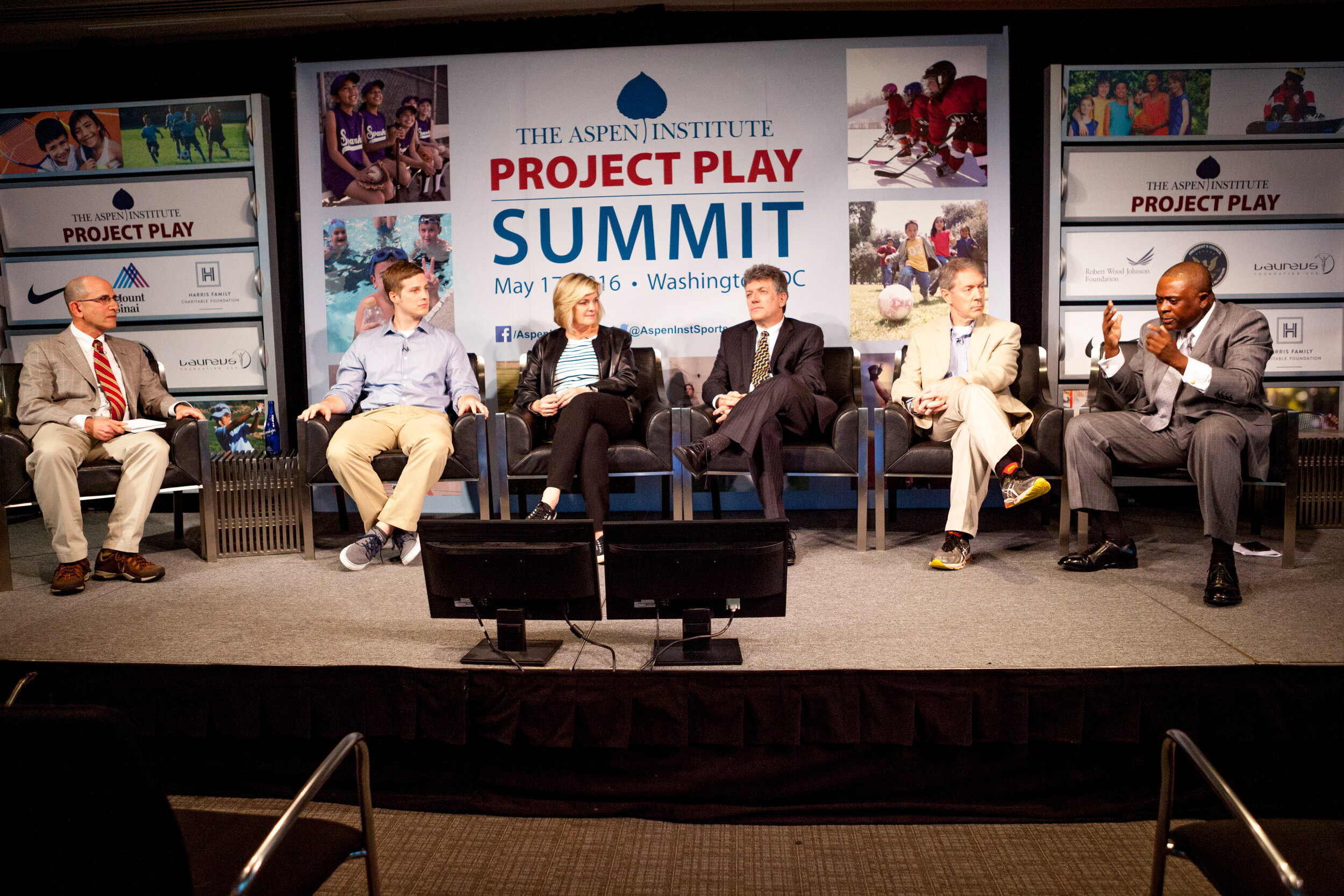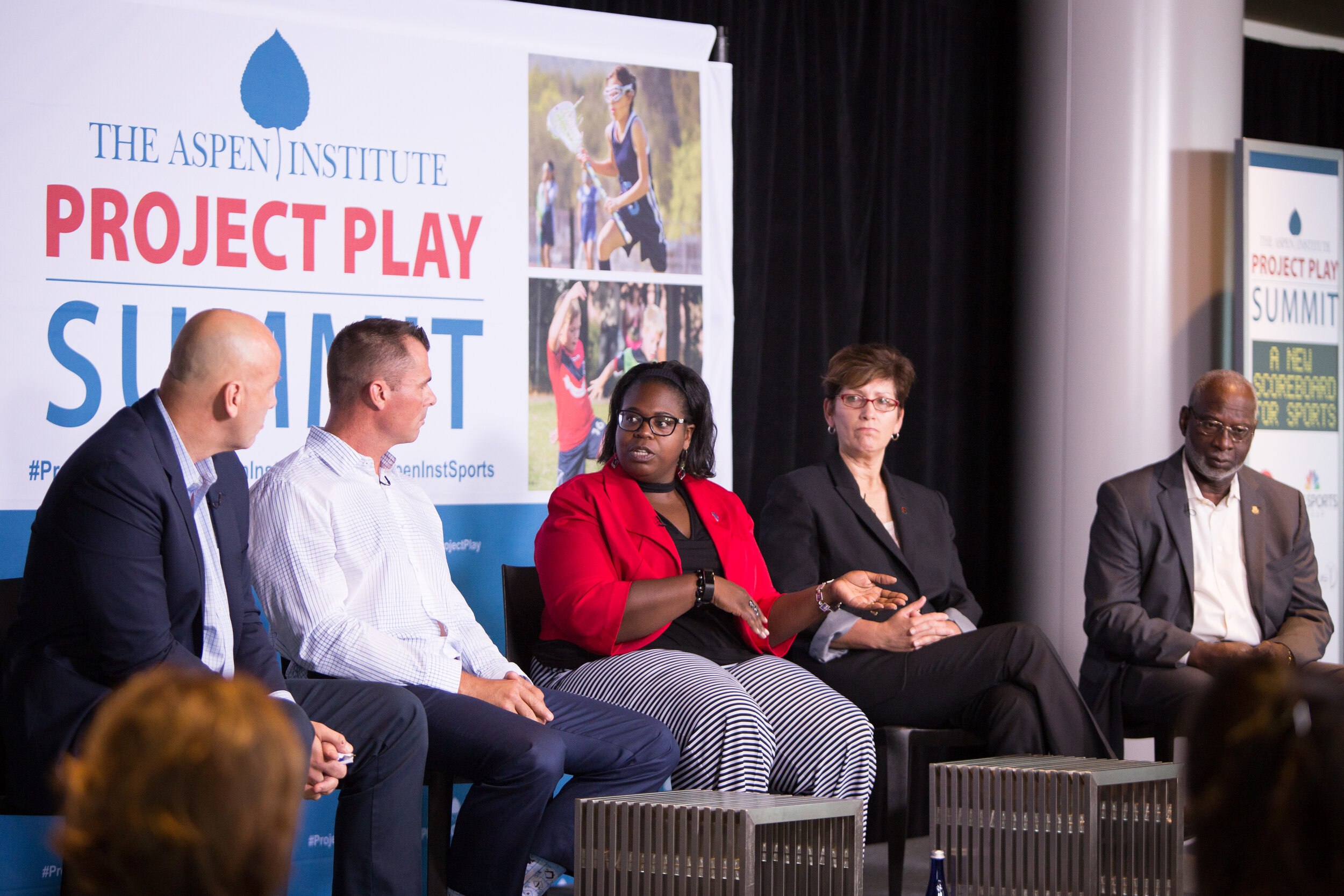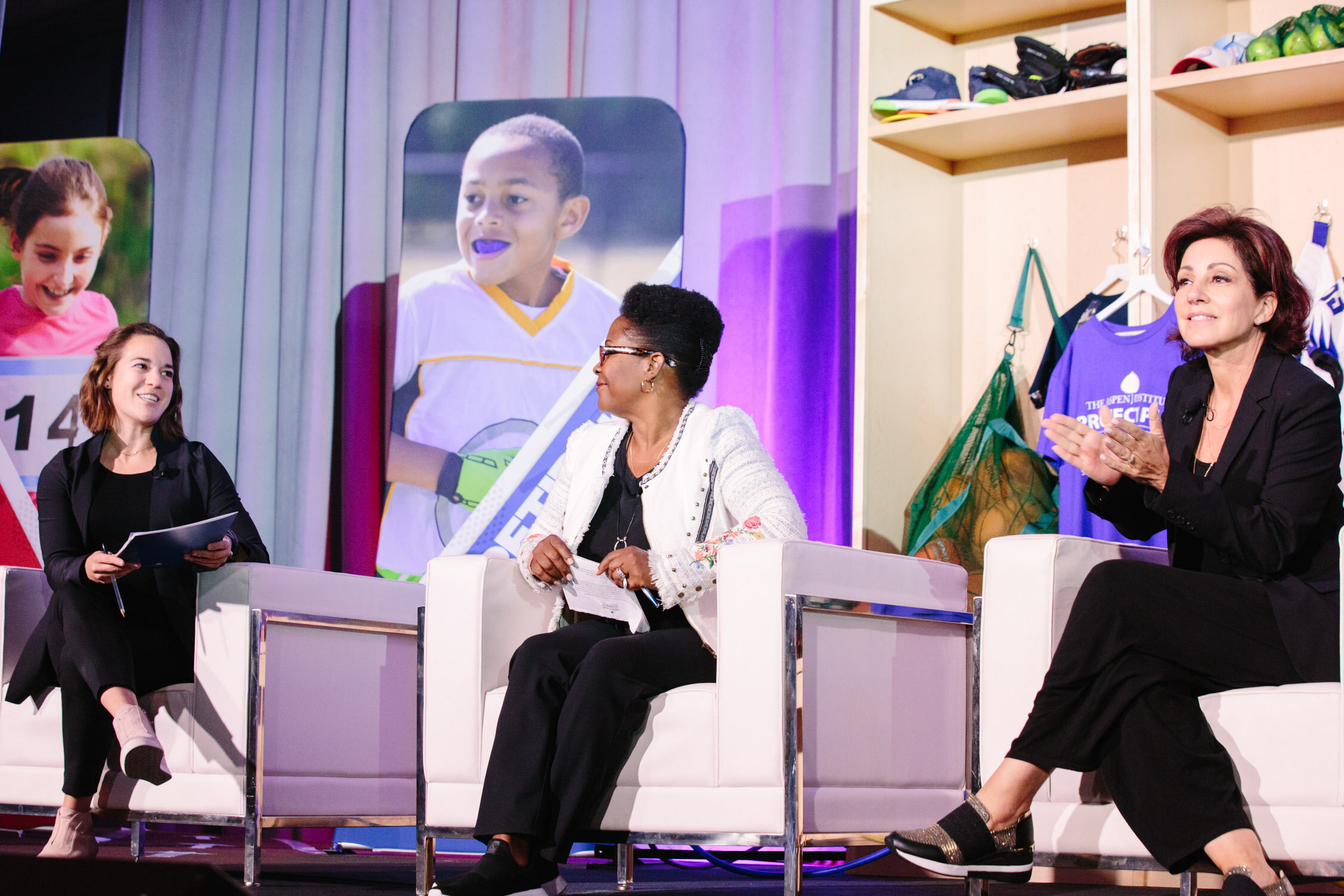It’s the biggest concern for every youth sports athlete, parent, coach and administrator — safety. An injury can disrupt a child’s entire season, putting skill development on pause and stressing a child’s mental health as they are separated from their sport and their teammates. In some cases, concussions and other serious injuries can have lifelong effects, as can abuse by a coach or another trusted adult in youth sports. When following any of the seven previous plays — from communication with kids and allowing space for free play to creating developmentally appropriate practice plans and coach certification — prevention needs to be at front of mind.
From Sport for All, Play for Life:
Among the many issues facing youth sports, injury risks trouble parents the most. The espnW/Aspen Institute Project Play survey showed that 9 out of 10 parents have safety concerns — and half of those describe safety as a major concern (espnW / Aspen Institute Project Play Survey of Parents, October 2014). Football has the highest rate of concussion in high school sports (Gessel et al., Journal of Athletic Training, 2007), and it’s up there with hockey at the youth level (Bahkos et al, Pediatrics, 2010). Players as young as age 7 take head hits akin to a car crash: in excess of 80 g’s, according to Virginia Tech researchers. Football is not the only sport with challenges, and concussion is not the only safety issue that leaders need to address.
Parents want their children in venues that provide both physical and emotional safety, free of bullying and all forms of abuse (Sabo and Veliz, Women’s Sports Foundation, 2008). While pre-participation exams cannot detect every risk factor — such as congenital narrowing of the spinal cord that can place a child at greater risk of paralysis — they need to be as comprehensive as possible, covering cardiac and joint issues, and conducted by qualified health professionals. These evaluations are especially important for children from low-income families as that may be the only time a child interacts with the health-care system all year. Parents need to know that sports will produce a positive health outcome. And children deserve nothing less.
Health, Safety Precautions are Lacking
Youth coaches who say they are trained in key areas
(Data: SFIA, 2013)
IDEAS
“We've got to take our egos out of the game. ... When we do everything we can to reduce (kids') stress and anxiety, we reduce their risk of getting injured.”
Valorie Kondos Field, former UCLA gymnastics coach
RESOURCES
5 ways to identify if your athlete is at risk for an overuse injury
Learn more in this one-pager created for Project Play by the U.S. Olympic and Paralympic Committee.
Safety Information
Find resources to prevent abuse (physical, emotional, sexual) in youth coaching at the US Center for SafeSport.
prevent emotional and physical abuse/Misconduct
US Center for SafeSport’s toolkit helps coaches, volunteers, and others who work directly with young athletes.
SUMMIT SESSIONS





"I would ban heading. Because it hurts. I don’t think it's necessary before age 14, at all."
Julie Foudy, former captain of the U.S. national soccer team
FINDING SUCCESS
Research is driving the agenda in the area of safety, prompting critical rules changes. In 2012, after Virginia Tech published results of its study measuring head impacts, the national office of the oldest youth football organization, Pop Warner, restricted contact drills to no more than one-third of practice time, its first-ever limit placed on teams. Later research found the limit reduced head impacts by half — to 158 per player for the season. If all youth football programs across the United States honor that limit, it could prevent as many as 150 million head hits a year among the more than 1 million children who play, according to researcher Stefan Duma.
For more ideas, read about the commitments made by Project Play Champion organizations here.

